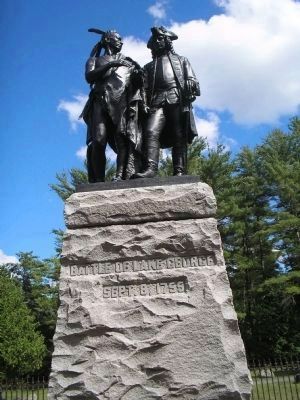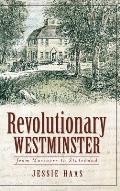This month, the town of Westminster,
Vermont, is celebrating the
Sestercentennial of the
“Westminster Massacre,” a clash that began over land titles and ended in the death of two men.
In the 1760s both
New York and
New Hampshire claimed the land between Lake Champlain and the Connecticut River. Gov.
Benning Wentworth of New Hampshire granted lots of real estate in six-mile-square town lots between 1749 and 1764. Meanwhile, the New York government issued larger, irregular land patents to wealthy landlords. Each set of claimants complained about the other.
In July 1764 the British government declared all that territory belonged to New York. By this time, a fair number of farmers from New England, particularly
Connecticut, had moved into the region. The New York patentees demanded those settlers buy that land, pay rent, or leave. In 1770 the
top court in New York confirmed that the New Hampshire land titles were invalid.
For the next few years, there were lots of disputes between settlers with New Hampshire titles and “Yorkers,” rent collectors or farmers arriving from New York with solid legal claims. The Green Mountain Boys formed as an unofficial
militia to intimidate Yorkers. Settlers held conventions modeled after those in the rebellious colonies, but they focused their ire on New York, not the imperial government.
On 14 Mar 1775 a court session was scheduled to take place in the town of Westminster. Judge
Thomas Chandler held a commission from New York, and his docket included evictions of men with old titles from New Hampshire as well as a
murder. Probably inspired by the shutdown of courts in Massachusetts in late 1774, about a hundred local men surrounded the courthouse on the evening of 13 March.
Sheriff William Patterson declared that assembly a
riot and ordered the men to disperse. When they refused, the sheriff went to Brattleboro, where New York law had more support, and recruited a posse of 60 to 70 men.
By the time Patterson and his force returned, the protesters were holding the Westminster courthouse and jail. Once again, the sheriff ordered them to leave. Night fell, and the courthouse was still occupied. Patterson told his Yorker posse to open fire on the courthouse. Some men inside fired back, wounding a magistrate.
Sheriff Patterson and his men stormed the building, shooting and clubbing those inside when they resisted. During that melee, twenty-two-year-old William French was shot five times; he died before dawn. Another man, Daniel Houghton, was beaten and died from his injuries nine days later. Seven rioters were arrested and locked into the jail.
On 14 March, a crowd of “upwards of 500” men came into Westminster from nearby towns. They freed the seven prisoners and locked up Patterson and his Yorkers. This mob then proceeded to Brattleboro, breaking into other Yorkers’ homes to arrest more men and bring them to the Westminster jail.
Benjamin Bellows, a militia captain from Walpole, New Hampshire, arrived with his company to restore order, but for local authorities, not New York. The Yorker leaders accused of killing French were taken to
Northampton, Massachusetts.
Ultimately, the outbreak of the Revolutionary War overshadowed all these events. Between the overlapping jurisdictions, the end of royal rule, and more immediately pressing matters, no one was ever tried for the actions in Westminster.
Some local historians cast the “Westminster Massacre” as the first fatal battle of the Revolutionary War. I view it, like the 1766–1771 Regulator movement in North Carolina, as a parallel conflict, but not one that involved the core dispute of the Revolution between the royal government and colonists resisting new taxes. The lines weren’t tightly drawn: while Patterson became a
Loyalist, Chandler and Bellows supported American independence.
The Westminster Historical Society has created an exhibit on the conflict 250 years ago in the Town Hall
museum, and it will host three commemorative gatherings.
Thursday, 13 March, 3:30 P.M.
Walk from the Azariah Wright house site (corner of Sand Hill Road and Route 5) to the town cemetery. Wright’s house was one of the gathering-places for the men who closed the court. This walk is about fifteen minutes. The event is all outdoors with no bathroom.
Friday, 14 March, about 4:00 P.M.
Gathering at the D.A.R. Courthouse Marker on Shattuck Road, celebrating how the crowd took back the courthouse. Ray Boas of the Walpole Historical Society will deliver remarks about Col. Bellows and his militia company preventing further bloodshed.
Saturday, 15 March, 6 P.M.
The museum will open to share the exhibit, remarks by public officials, refreshments, and bathrooms. At 7:00 there will be a twilight vigil at William French’s grave site on the anniversary of his burial. This is the event designed for visitors from outside the region. There will be parking behind the Post Office on the other side of the road.
For more about Westminster history, see Jessie Haas’s books
Revolutionary Westminster and
Westminster, Vermont, 1735–2000: Township Number One.






_crop.jpg/250px-General_John_Stark_-_Ulysses_Tenney%2C_c1790_(Manchester_Hist_Assoc_MHA_316)_crop.jpg)












